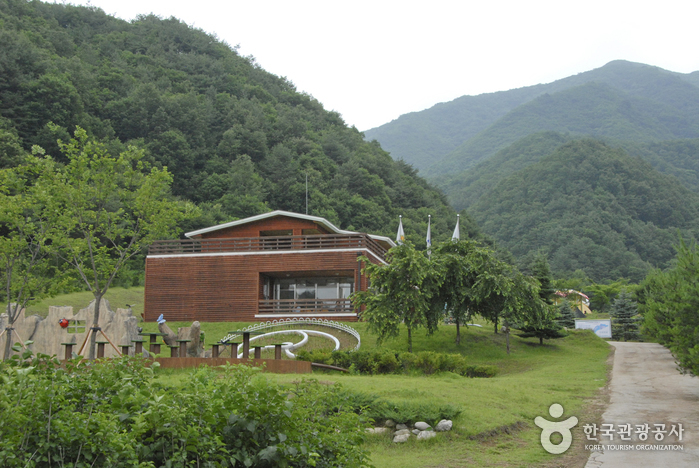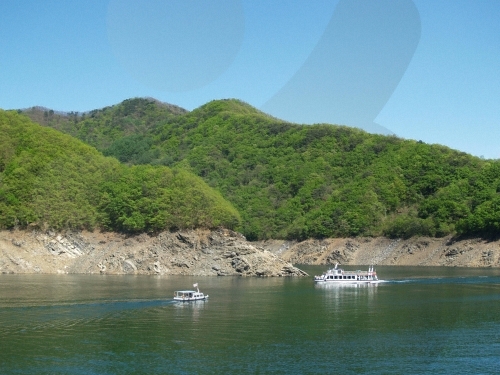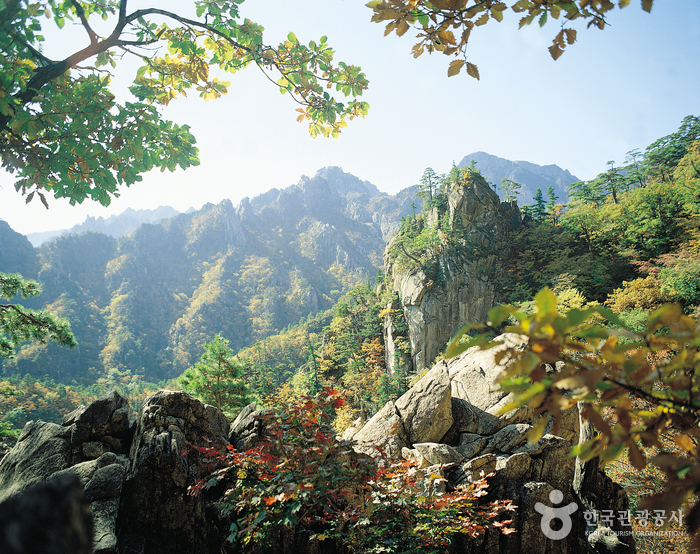Chuncheon Cheongpyeongsa Temple (청평사 (춘천))
19.3Km 2023-05-22
810, Obongsan-gil, Chuncheon-si, Gangwon-do
+82-33-244-1095
Cheongpyeongsa Temple is a Buddhist temple with 1,000 years of tradition, located at Obongsan Mountain. Originally established as Baegamseonwon Temple in 973, the temple changed its name several times, went through construction works, and has become the current Cheongpyeongsa Temple. Yi Ja-hyeon, a scholar of the Goryeo period, built a garden here by keeping its natural topography after he left his government post. In this area, there is a pond that was built during the Goryeo period and has preserved its original form. Many cultural heritages have disappeared over the years and during the Korean War as well. The remaining cultural heritages include Hoejeonmun Gate of Cheongpyeongsa Temple (Treasure No. 164), Three-story Stone Pagoda of Cheongpyeongsa Temple (Gangwon-do Cultural Heritage Material No. 8), and Stupa of Yi Ja-hyeon (posthumous epithet: Jillakgong). Cheongpyeongsa Temple’s Hoejeonmun Gate was built instead of Sacheonwangmun Gate (the gate of the Four Guardian Kings) to enlighten people about the transmigration of souls. Cheongpyeongsa Temple bears a myth about a princess and a serpent. The princess suffered a lot from a serpent as she couldn’t get rid of it from her body. Then she came to Cheongpyeongsa Temple and prayed to the Buddha, and she became free from the serpent. Therefore, the Three-story Stone Pagoda of Cheongpyeongsa Temple is also called “Princess Pagoda.” Although the scale of the temple is not large, it is known for its beautiful natural landscape harmonized with artificial structures, such as a pavilion and a pond. Accordingly, the temple area was designated as Scenic Site No. 70. Cheongpyeongsa Temple can also be reached by taking a ferry at the Soyanggang Dam Quay.
Yanggu Eco-Botanical Garden (양구생태식물원)
19.7Km 2022-08-18
169, Sumgol-ro 310beon-gil, Yanggu-gun, Gangwon-do
+82-33-480-7391
First opened in June 2004, Yanggu Eco-Botanical Garden was built on a total area of 189,141 ㎡. Nearly 3.1 billion Korean won (approximately 3 million USD) was spent on the construction and it was built to be developed into a South and North Korean ecosystem restoration center. Located in the northernmost region of South Korea, it houses more than 400 rare plants including plants that are Korean native species and protected by Korean Ministry of Environment.
The garden is divided into six parts by their features including a botanical garden, natural forest, and facilities zone. In the botanical garden, rare plants such as northern native plants and alpine plants that are naturally grown in the demilitarized zone (DMZ) and Yanggu area are displayed in one place.
There are also walking trails, a medicinal plants exhibition hall, plant nursery, and greenhouse. To add a natural and lively touch to the garden, a mountain stream zone and wetlands zone were prepared to provide people with the chance to enjoy the pleasant sound of running water.
Soyangho Lake Ferry (소양호 유람선)
19.8Km 2020-04-28
1133, Sinsaembat-ro, Chuncheon-si, Gangwon-do
+82-33-242-2455
Soyangho Lake was created by the building of Soyanggang Dam in 1973, and holds approximately 2.7 billion tons of water. It is the largest lake in Korea, earning it the nickname of the "inland sea." Islands dot the landscape, and the lake is home to over 50 types of freshwater fish, making it a popular destination for watersports and fishing.
Seoraksan National Park (Inner Section) (설악산국립공원 (내설악))
20.0Km 2021-04-13
Buk-myeon, Inje-gun, Gangwon-do
+82-33-801-0900
Daecheongbong Peak in Seoraksan Mountain, at an altitude of 1,708 meters, is the highest peak among the Taebaek Mountain Range, providing amazing view all year round. With various flowers in spring, clear and fresh stream water in summer, fall foliage in fall, and snow covered mountain in winter, Seoraksan Mountain is the most beautiful mountain in Korea.
The inner section ("Naeseorak") of the mountain stretches from the borderline of Hangyeryeong Pass and Misiryeong Pass to Inje-gun in the west. There are various valleys and waterfalls not to be missed as well as several hiking courses that represent the mountain.




 English
English
 한국어
한국어 日本語
日本語 中文(简体)
中文(简体) Deutsch
Deutsch Français
Français Español
Español Русский
Русский